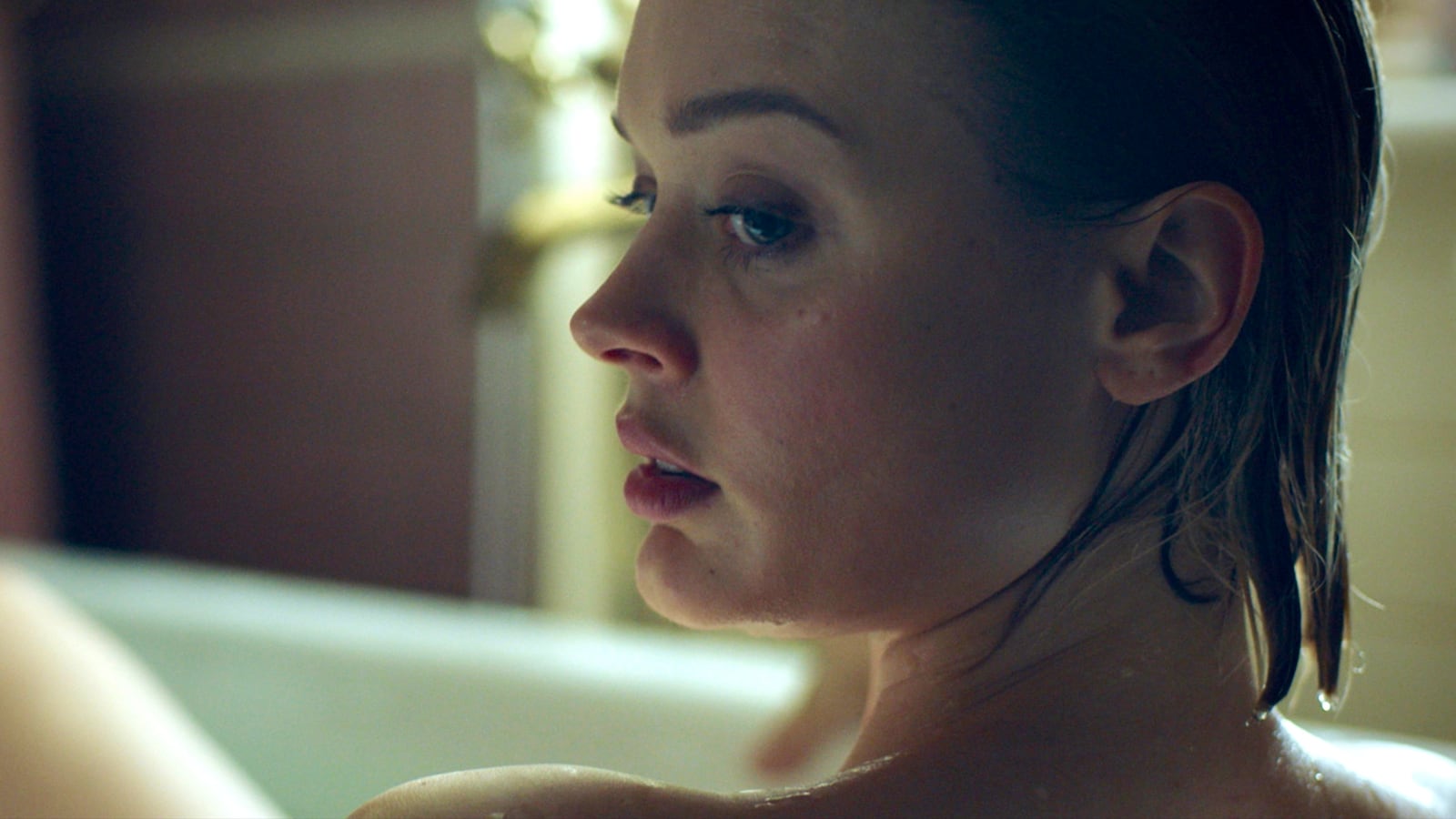There’s horror in old age—the sort no one wants to think about, or look at, or discuss. It’s in that uncomfortable truth that Relic locates its greatest terror and, in doing so, delivers deep, gnawing dread that lingers long after its credits have rolled.
The feature debut of Japanese-Australian filmmaker Natalie Erika James, who co-wrote the script with Christian White, Relic (premiering at drive-in theaters on July 3, and on VOD July 10) concerns three generations of women in an Australian family who are brought together by a puzzling crisis. Matriarch Edna (Robyn Nevin) has gone missing from her long-time rural home. Upon being notified by phone of this strange occurrence, her daughter Kay (Emily Mortimer) and granddaughter Sam (Bella Heathcote) arrive to figure out what’s taken place. What they discover is an abandoned house full of boxes stuffed with pictures and knickknacks, and Post-it Notes plastered about, reminding Edna to “Take Pills” (on her nightstand) and “Turn Off Tap” (at her tub).
That latter message holds particular significance because Relic’s ominous prologue depicts Edna standing, naked, in front of pulsating Christmas tree lights as water flows over the edge of her bathtub, down the hallway and staircase, and into the living room. Something is clearly not right with Edna, and as we swiftly learn, Kay knows it, since her mom informed her—during their last phone call—that she thought someone was coming into the house, turning on the lights, leaving doors open, and shifting the position of her armchair. To Kay, such comments seemed like the ramblings of a woman slowly losing her marbles. Yet the fact that said armchair has been strangely repositioned—and that her mom is nowhere to be found—nonetheless worries her. So too do the dreams she begins having about an old cabin in the woods where a blackened corpse-like figure sits on the edge of a bed, the surrounding floor (and ceiling) splattered with inky stains.
Corrosive rot is everywhere in Relic, not only on the walls of Edna’s abode but also on the leaf-strewn ground and in the damp, misty air of the surrounding forest. Aided by cinematographer Charlie Sarroff’s foreboding vistas of this soggy milieu, James crafts an atmosphere of chilly decay that gets under one’s skin—including that of Kay and Sam. A police-coordinated search of the region for Edna turns up nothing, but three days after she first vanished, Edna reappears in her kitchen, barefoot and blank-eyed, and unable—or unwilling—to discuss where she’s been. Sam takes her gran’s reappearance as a victory and thus cares little for an explanation regarding her recent whereabouts. Kay, however, isn’t so quick to move on, and when answers don’t materialize, she takes matters into her own hands by visiting a Melbourne nursing home where she believes Edna now belongs.
Sam views this potential plan as akin to a betrayal, lambasting her mother for abdicating her obligation to change Edna’s diapers in the same manner that Edna changed Kay’s when she was a child. To Kay, though, this is merely the inevitable road along which life travels, even if, during her visit to the retirement facility, she’s somewhat unnerved by the place’s gray gloom and its residents’ haunted visages. In a superbly subdued performance, Mortimer employs silent, morose glances to convey the way in which, no matter how hard Kay attempts to project dutiful certainty, this decision weighs upon her. And compounding Kay’s dilemma, Edna’s quasi-possessed demeanor grows more pronounced by the day, and her bizarre behavior soon starts escalating at a rapid rate, be it claiming that someone is hiding under her bed, or whispering to unseen figures about paranoid apprehensions.
Focusing the brunt of its action on Edna’s strange conduct (and Sam’s harrowing experiences with it), Relic doesn’t excessively underline its nursing home plot thread. Nonetheless, it speaks directly to the story’s larger issues about mental and physical deterioration, especially since the question looming large over the proceedings is whether Edna’s craziness—giving a wedding-ring heirloom to Sam and then forgetfully claiming the girl stole it; talking to an invisible person about how Sam and Kay aren’t really who they say they are—is the byproduct of supernatural forces or her own natural decline. In one suspenseful scene after another, routinely marked by Nevin’s disquietingly vacant stare, James makes it difficult to determine the boundary between the real and unreal, such that even once events take a more overtly paranormal turn, the film keeps one guessing about the reliability of what’s being depicted—a strategy that only amplifies the material’s tension.
Central to Relic’s madness is the sight of a round stained-glass window in the front door of Edna’s residence, which also decorated the door of the cabin in Kay’s dreams, and which is slowly becoming covered in the black blight consuming so much of the house—and, more startling still, Edna herself, emanating from a bruise in the center of her chest. In this nightmare, the past is like an infectious fungus, as is time, creeping methodically along and destroying everything in its wake. After significant build-up, things begin spiraling downward—quite literally, in one subtly bravura sequence—as Sam and Kay find themselves trapped in a haunted-house maze not unlike the mind of its owner, all cluttered artifacts, narrowing passageways and dwindling light, where it’s hard to see and nothing makes sense except the consuming fear of being trapped forever in a funhouse-mirror netherworld of chaotic memories and bewildering darkness.
More than its gruesome flourishes, it’s this inescapable, claustrophobic sense of degeneration that enlivens Relic, particularly as it wends its way toward a climax of stabbing, snaking insanity, and a coda of creepy, selfless compassion. In its final moments, James’ excellent directorial debut reveals itself to be a portrait of the responsibility and love that everyone owes their elders, year after year, generation after generation—a duty that’s as common and noble as it often is distressing, considering that it invariably requires coming face to face with the rot that awaits us all.


